If you want to move better and feel better, you need to move more throughout the day. You also need to make sure that your workout program includes a proper warm up routine.
The more you can stretch out and loosen up everything that gets tight from sitting hunched over a computer all day, the better you are going to feel and move while also preventing and alleviating injury!
Below are 5 Quick Stretching Flows you can use throughout the day or if you are in need of a quick warm up. Do not skip your warm up just because you are short on time! A proper warm up is essential to helping you move better and get the most out of your workouts.
5 Quick Stretching Flows To Loosen Up
These 5 Quick Stretching Flows will really target your hips and spine to open everything up after sitting at a desk hunched over a computer all day. These flows are all tough, compound movements and will loosen everything up while warming you up in only a few reps.
However, you do not rush through them. Pause for a second or two in any spot that feels extra tight to help the muscles relax and open up. If you instead simply rush through, you won’t truly loosen everything up.
The Dynamic Squat Flow – This flow will loosen up your back, hamstrings, hips and adductors while also working on your ankle and hip mobility.
If you plan to do a Squat workout, this is a great quick warm up move. You will want to do a couple reps of each piece of the flow before moving on to the next movement. Spend longer on any piece that address your tight areas. Complete 3-5 rounds through the entire flow.
To do the Dynamic Squat Flow, start standing tall. Lift one foot up off the ground and begin to circle your foot, circling from the ankle. Complete a few circles clockwise and a few counterclockwise.

Then place that foot down on the ground and circle the other foot. Place that foot back down and stand with your feet and legs close together. Bend over and place your hands on your knees and then, with a slight bend to your knees, circle your knees clockwise and then counterclockwise.
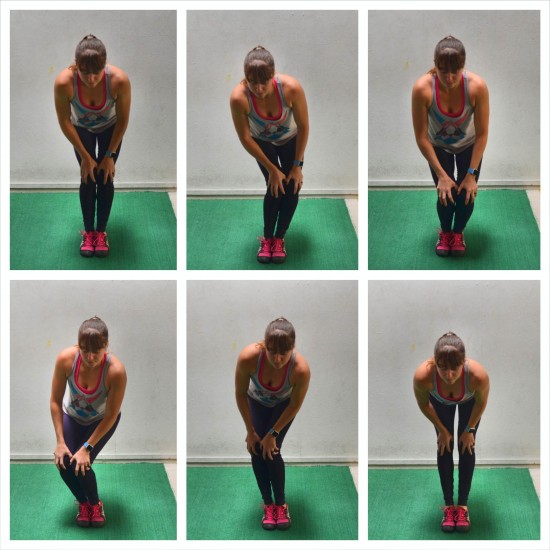
After performing a few circles, stand up nice and tall and place your hands on your hips. Circle at your hips clockwise and counterclockwise. Don’t really bend your knees to get a bigger circle. Really focus on circling both ways from your hips.
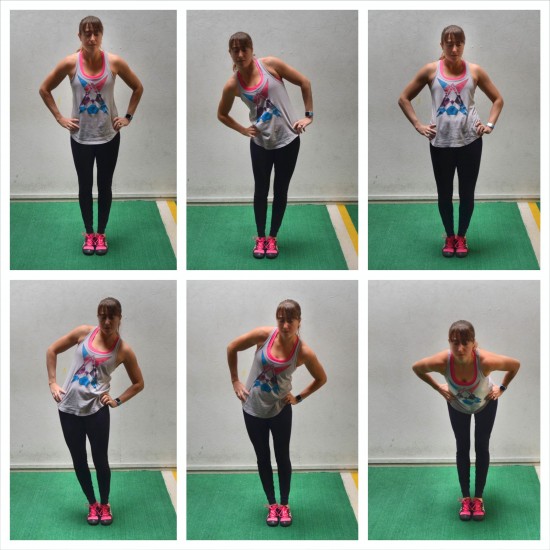
Once you’ve done a few circles each way, move your feet to about hip-width apart. Then hang over, reaching for the ground as you keep your legs straight. Feel a stretch down your hamstrings and calves and even up into your back. As you hang over, circle your arms and upper body over toward the outside of your right foot.
Then come back around front and circle over toward the outside of your left foot. Keep your legs straight and feel a stretch up the outside of the opposite side from where you are reaching. Come back center. Move a few times from side to side then hang down center.
You can place your hands on your feet or even on the ground between your legs, but try to keep your legs straight. You can even place your hands on your shins.
Then sink into a squat, keeping your heels down. Sink as low as you can while keeping your heels down. You can use your hands on your feet or in between your legs to help you get lower. You can even slightly press out on your knees to stretch out your inner thighs a bit.
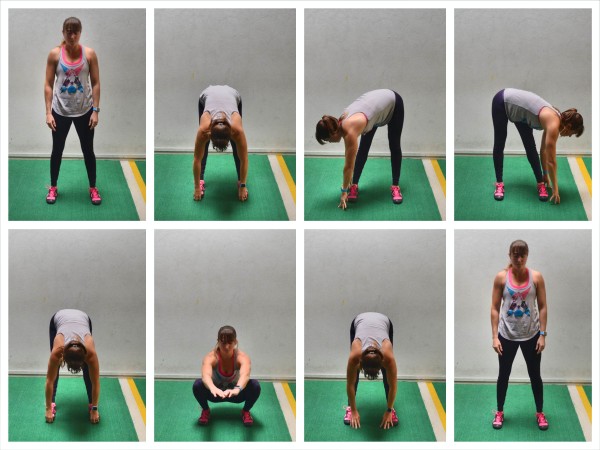
In the low squat, you can shift a little from side to side. You can even lift your hands and drive your elbows into your knees more as you rock.
You can also alternate knee drops while in the low squat. To do the knee drops, rotate and drop one knee in and forward on the ground, pivoting your feet. Then come back to the squat and drop the other knee forward and slightly across your body before moving back to the squat. You can place your hands on the ground if you need to balance.
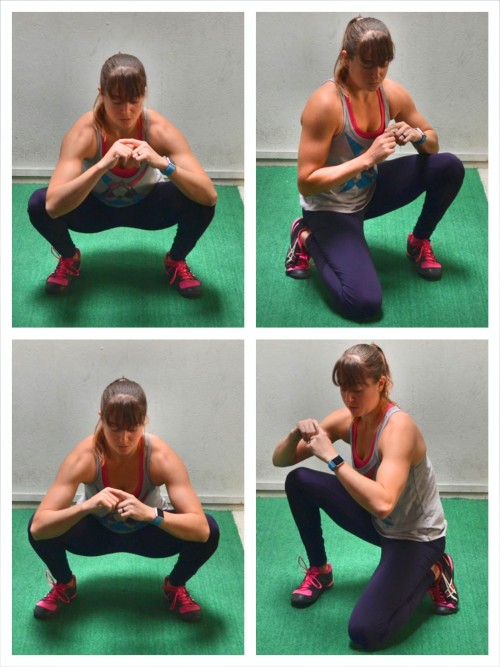
After sitting a bit in the squat, hang back over with your legs straight and butt up in the air.
Then repeat the entire thing (even the ankle, knee and hip circles) or simply the hang over circles and the squat. Focus on the areas of tightness.
You can also change your foot position as you flow through the Dynamic Squat Series. You can bring your feet all the way together and squat (great way to warm up your legs for single leg squats) or you can widen your feet out more and squat, especially if you really want to open up your inner thighs.
To do the wide squat, widen your feet out to at least shoulder-width if not slightly wider. You can even point your toes slightly out. Perform the hang over with straight legs and even circle from the outside of one foot to the other.
Then with your hands center, sink down into the squat. Rock slightly side to side at the bottom and even push your elbows into your knees to drive them open and stretch your inner thighs more.
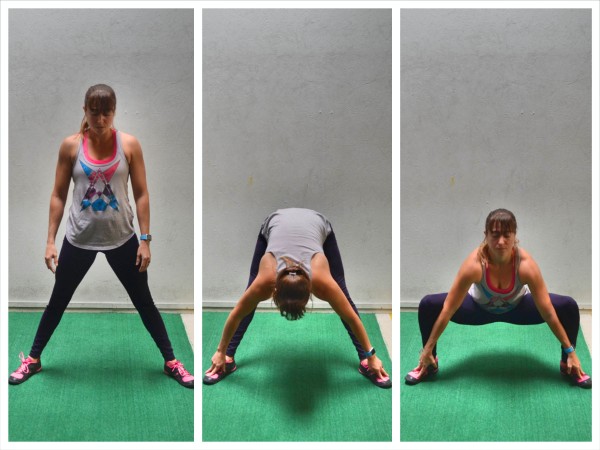
You can even do rotational reaches at the bottom of this squat or any of the other squat stances.
To do the rotational reaches, sit at the bottom of the squat and place one hand down on the ground as you reach the other hand up toward the ceiling. Really try to rotate your chest open as you reach. Keep your heels down as you rotate open.
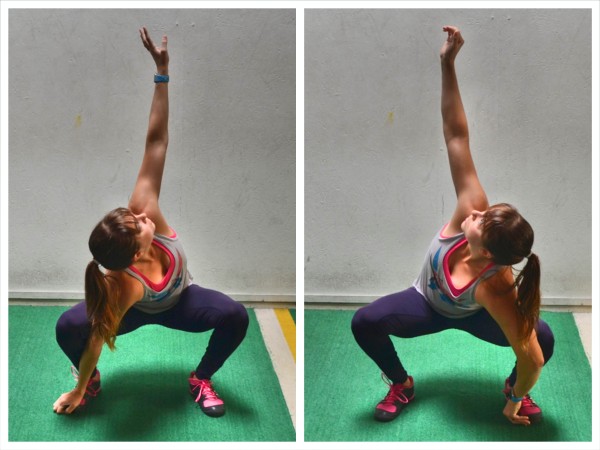
Then place that hand down on the ground and reach and rotate the other way. Do a few rotational reaches then hang back over with your legs straight before standing back up. Remember to focus on any tight areas. You do not need to do all the pieces every time. Just focus on the parts of the flow that address your tight areas.
The Side to Side Flow – The Side to Side Flow is another great one to open up your hips, chest and back while also targeting your adductors and hamstrings. This is a great move for runners or anyone stuck seated at a desk or in a car for too long. It will warm up and loosen up your legs and hips after being stuck in flexion all day at a desk.
It is also a great flow because it opens up your hips by rotating them through a range of motion and really opens up and releases everything around your lumbo-pelvic-hip-complex.
To do the Side to Side Flow, set up with your feet parallel and wider than shoulder-width apart. You can adjust as needed so that you can perform side lunges and the low runner’s lunge depending on your flexibility and mobility. Hang over with both legs straight. You can even grab your feet and pull your head back through your legs toward your heels. Relax deeper into the stretch and keep your legs straight.
Then bend one knee and shift into a side lunge as you walk your hands over toward the side with the bent knee. Keep your feet parallel as you push your butt back and sink into the side lunge. Do not let the other leg bend. Keep it straight to stretch.
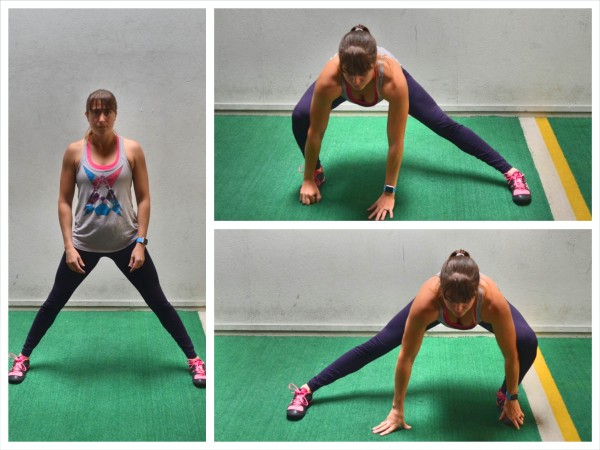
If you want to change exactly what muscles are stretched, you can pivot the toe of the straight leg up toward the ceiling and hold for a second before lowering it back down.
Then come back center, walking your hands center as you straighten both legs. Then sink into a side lunge on the other side. Hold for a second and stretch further then come back center with your legs straight.
Shift back to the first side again, but as you do, this time pivot your feet. Pivot your feet as you bend the front knee and keep the back leg straight. Keep your front heel down, but let yourself come up onto the ball of your back foot. Still drive back through your heel, but do not worry about keeping it down on the ground. Try to get both toes pointing straight ahead toward the direction you pivoted. Hold for a second or two with your hands on the ground just inside your front leg.
Then drop your back knee down and flex your back foot hard into the ground. As you flex your back foot and even squeeze the glute of the back leg, lift your hands up off the ground and reach them overhead. Arch back and feel a nice stretch down the back hip and quad. Breathe as you reach overhead.
Make sure to engage your glute so that you stretch your hip and don’t simply hyperextend your low back. You do not want to feel your low back engaging. Hold for a second or two.
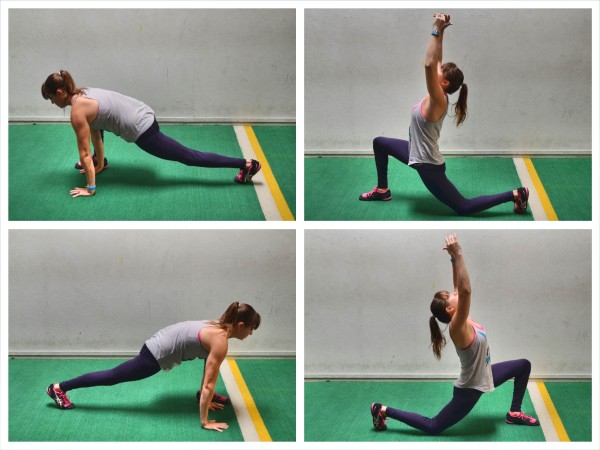
Then lower your hands back down and lift your back knee. Pivot back center with both your legs straight before switching to a low runner’s lunge on the other side. After pivoting into the low runner’s lunge, again drop your knee and repeat the half-kneeling hip and quad stretch.
Lift the knee and again pivot back center with both legs straight. Hang over for a breath and then reach your opposite arm toward your opposite foot. Keep your legs straight as you grab the opposite foot or shin with your hand. Reach the other hand up toward the ceiling as you try to rotate your chest open. Hold and try to rotate open more as you keep your legs straight.
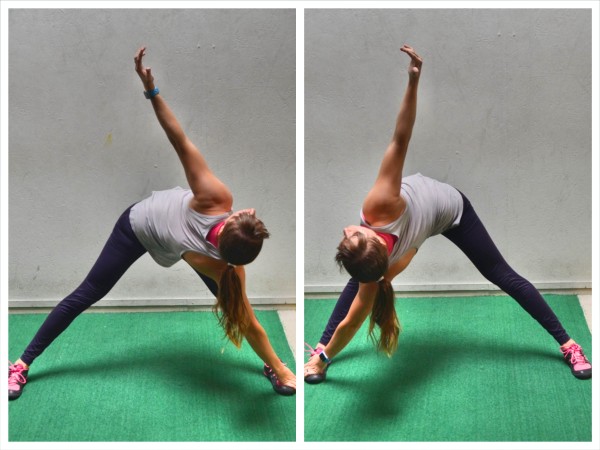
Then walk your hands back center and walk the opposite hand over to the other foot. Reach the other hand up toward the ceiling and rotate open again. Come back center then, keeping your legs straight and arms out to the side, lift back up to standing. From here you can repeat the sequence as needed.
The Pigeon Flow – If you have low back pain, sciatica or simply sit hunched over a computer all day, this is a must-do flow for you. It is a great one to do in the morning when you first get up or right after work to open up your hips and back.
The Pigeon Flow will work on your thoracic extension as well as open up your lumbo-pelvic-hip-complex and even stretch your calves. It will even warm up your shoulders and can help alleviate neck, shoulder and upper back pain.
To do the Pigeon Flow, start in the plank position from your hands and feet with your hands under your shoulders and your feet about hip-width apart.
Then push back into downward dog, driving your butt up in the air as you press your chest back toward your legs and your heels down toward the ground. Extend your back as you press your butt up and chest back. Keep your arms straight and drive back through your entire hand. Try to get your biceps by your ears as you extend your spine.
Do not simply extend your low back, but try to extend your upper and mid back as well. As you extend your back and press your butt up in the air, feel yourself also lengthening through your hamstrings as you drive your heels down toward the ground.
Breathe and relax further into the stretch. You can even pedal your feet as you hold here.

Then lift one leg up off the ground and up toward the ceiling. Keep driving your chest back as you lift the leg and kick the heel up toward the ceiling.
From here, you can bend the knee and rotate, allowing the leg to kick back and across your body to open up your hip and twist your spine. Kick the leg back and over, but still try to press your chest back and extend your spine as you drive your other heel down. Do not come forward into plank as you kick back and over.
Then bring the raised leg back forward and up under your body toward your elbows. Bend the knee as you bring the leg forward and even turn the knee out slightly so that you can set your leg down and move into pigeon pose.
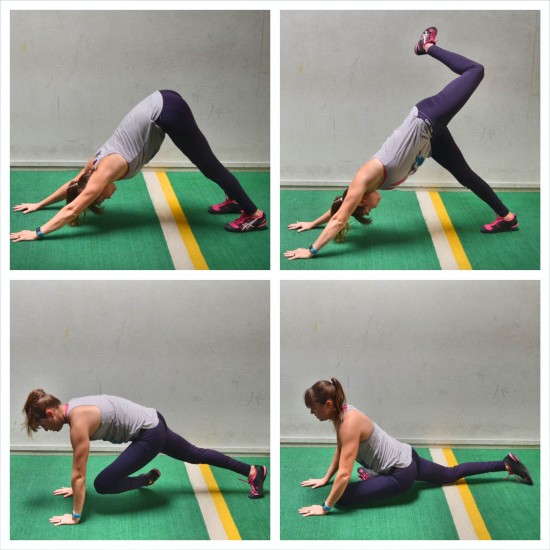
Drop your lower leg down to the ground and adjust your foot as necessary. The further out that front heel is from your body, the more intense the stretch will be. Shift your hips over so that your hips are square to the ground and your back leg is out straight but slightly internally rotated. You should feel a nice stretch in the outside of the front hip and even down the front of the back leg.
Relax forward onto your forearms. You can hold here or you can begin to circle your arms toward your left and then your right. By walking your hands around, you will stretch slightly different aspects around your hips. Make sure to keep your hips square though.
If at any time the stretch is too much or too little, adjust your front foot and lower leg. Bring your heel back toward you to lessen the stretch or move the foot away to make it more intense. Do not let your hips rotate open though. Keep them square.
After circling your arms a few times, bring your hands back center and press yourself back. You may need to walk your hands in toward your body to help press you back. Open your chest up toward the ceiling as you sit up tall and feel the stretch even more in the hip of the leg that is back. Hold for a second then place your hands back down in front of you and lift back up to move that front leg back into downward dog.

Again drive your chest back and feel your spine extending as you even stretch your lats and chest. Drive your heels down toward the ground and feel your hamstrings and calves stretching as you press your butt up in the air.
Then lift the other leg and repeat the sequence on the other side.
The Inchworm Flow – This Flow is even a great quick recovery workout that will get your blood pumping a bit as it stretches out your hips, hamstrings, back, lats and chest while working your shoulders and core.
The Inchworm Flow does require a bit more strength and mobility so beginners may want to start with the other flows first.
To do the Inchworm Flow, start standing with your feet about hip-width apart. Then, keeping your legs straight, bend over and place your hands on the ground. Walk your hands out away from your body as you lower down into a plank position.
Once in the plank position, drop your hips and arch up into an upward facing down position.
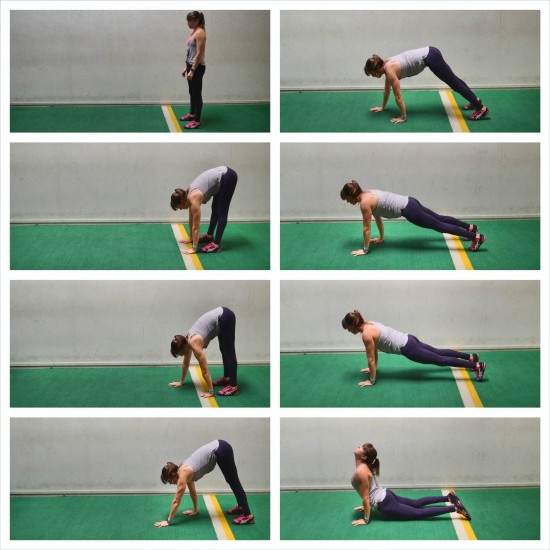
Drop your hips toward the ground as you press your chest out with your arms straight. You can change your foot position and come forward onto the tops of your feet instead of staying on the balls of your feet.
Do not shrug your shoulders as you open your chest up toward the ceiling. Make sure to keep your glutes tight as well so that you don’t feel this in your low back. Beginners can do a variation, letting their legs touch the ground as they arch back.
Then come back up into plank and then push back into downward dog. Press your chest back between your arms with your arms straight. Drive your butt up into the air as you extend your spine and feel a stretch down your hamstrings and calves. Try to relax your heels down toward the ground as you lengthen through your hamstrings to lift your butt toward the ceiling. Hold for a second or two as you lengthen through your spine.
Push back a little further into downward dog then come forward close to the ground, performing a dive bomber push up. Pretend like you are sneaking under a fence as you come forward. Bend your elbows and drop your chest close to the ground as you more forward from the downward dog into an upward facing dog. You want to sneak forward close to the ground as if crawling under a fence before arching up into upward facing dog.
Once in upward facing dog, press your chest out and open toward the ceiling. Do not shrug your shoulders. Also, drop your hips toward the ground and feel your hips stretching. Squeeze your glutes to protect your low back.
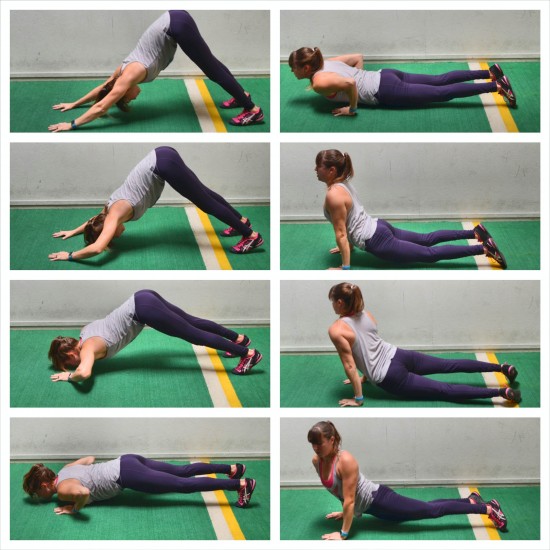
Hold for a second or two, even rocking slightly from side to side as you hold, then press your butt up and walk your feet forward into your hands. Keep your legs straight as you walk your feet in toward your hands. Take small steps.
Once you’ve walked your feet forward, hang over for a second with your legs straight to stretch your hamstrings and then stand up. You can also roll up one vertebrae at a time and finally roll your shoulder back at the top.
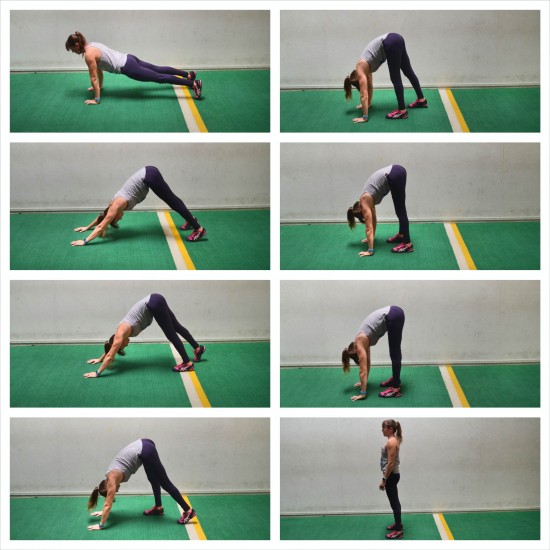
You can then walk your hands back out and repeat.
If you don’t have much space you can turn around and repeat instead of continuing to move forward. You can also change the move up and make your upper body work harder by walking your hands back in toward your feet instead of walking your feet in toward your hands to come back up to standing. That can also make the move a bit easier on your hamstrings. It is also a great variation if you have to do the move in place.
The Runner’s Lunge Flow – This is a great variation of the World’s Greatest Stretch to open up and stretch your hips, hamstrings, quads, spine, glutes and chest.
The Runner’s Lunge Flow will also wake up and warm up your entire core and legs.

To do the Runner’s Lunge Flow, start in the high plank position with your hands under your shoulders and your body in a nice straight line down toward your heels. Your feet should be close together.
Then step one foot up outside of your hands so you are in a low runners lunge. Your back leg should be straight as your front knee is bent. If you can’t step the foot all the way up, you can adjust your foot after stepping forward as far as you can.
Keeping your front foot flat on the ground and your back leg straight, drop the elbow of the same arm as the leg that is forward down toward your instep. Try to touch it to the ground without rocking toward the outside of your foot.
After dropping the elbow down toward the ground, lift the arm up overhead, rotating open toward that front leg. Then rotate back closed, placing the hand back down on the ground. You can then choose to rotate open the other way, lifting the other hand up off the ground as you rotate away from your front leg.
Then, after rotating one or both ways, drop your back knee down and sit your butt back toward your back heel as you straighten your front leg. Reach your hands toward that front foot as you sit your butt back and hinge over at the hips. Don’t simply round forward. Really sit the butt back as you lean over to stretch the hamstring and calf of that front leg.
As you grab your front foot, you can even rotate the foot and leg to hit slightly different aspects. Hold for a second or two then shift back forward, keeping the back knee down. Again place your hands just inside your front foot.
Then, with the hand on the same side as the foot that is forward, reach back and around to grab your back foot and pull your heel in toward your glute. As you do, keep your other hand down on the ground. Pull your heel in as you squeeze that back glute to drive your hip forward. Feel the hip stretch. While stretching that back hip, rotate your chest open toward that front leg. Do not shrug the shoulder of the arm that is down or let that arm get way out in front of you. Hold for a second or two then release the back foot and lift the knee up off the ground.
If you are less flexible, you may not be able to grab your back foot. You can instead do the rotational hip stretch without holding your foot or you can keep a towel or rope near by to help you reach your foot for the stretch. Either way, make sure to squeeze that back glute and really extend the hip to stretch it and your quad.
Once back up in the low runner’s lunge, pivot your feet and sink into a low Cossack’s-like squat on the side that is forward. Really sink your butt down as you bend that front knee a little bit more while keeping the back leg straight. Pivot the back toe up as you stretch and stay as low in the squat as you can. Keep both heels down and even use your hands a bit for balance.
If you lift your hands, it will make your core work harder; however, don’t do it if you can’t stay low or your heels come up.
Hold for a second or two then pivot toward your other side, bending the straight leg as you walk your hands toward the instep of that foot. Shift into a low runner’s lunge on that side. Repeat the elbow drop, rotations, hamstring stretch, rotational hip and quad stretch before performing another Cossack’s-like squat and shifting back toward the side you started with.
Using these 5 Flows you can loosen up everything that gets tight from sitting hunched over all day.
These flows can help you loosen and realign tight muscles to start correcting imbalances, which will help you prevent injury and even get in a better workout!
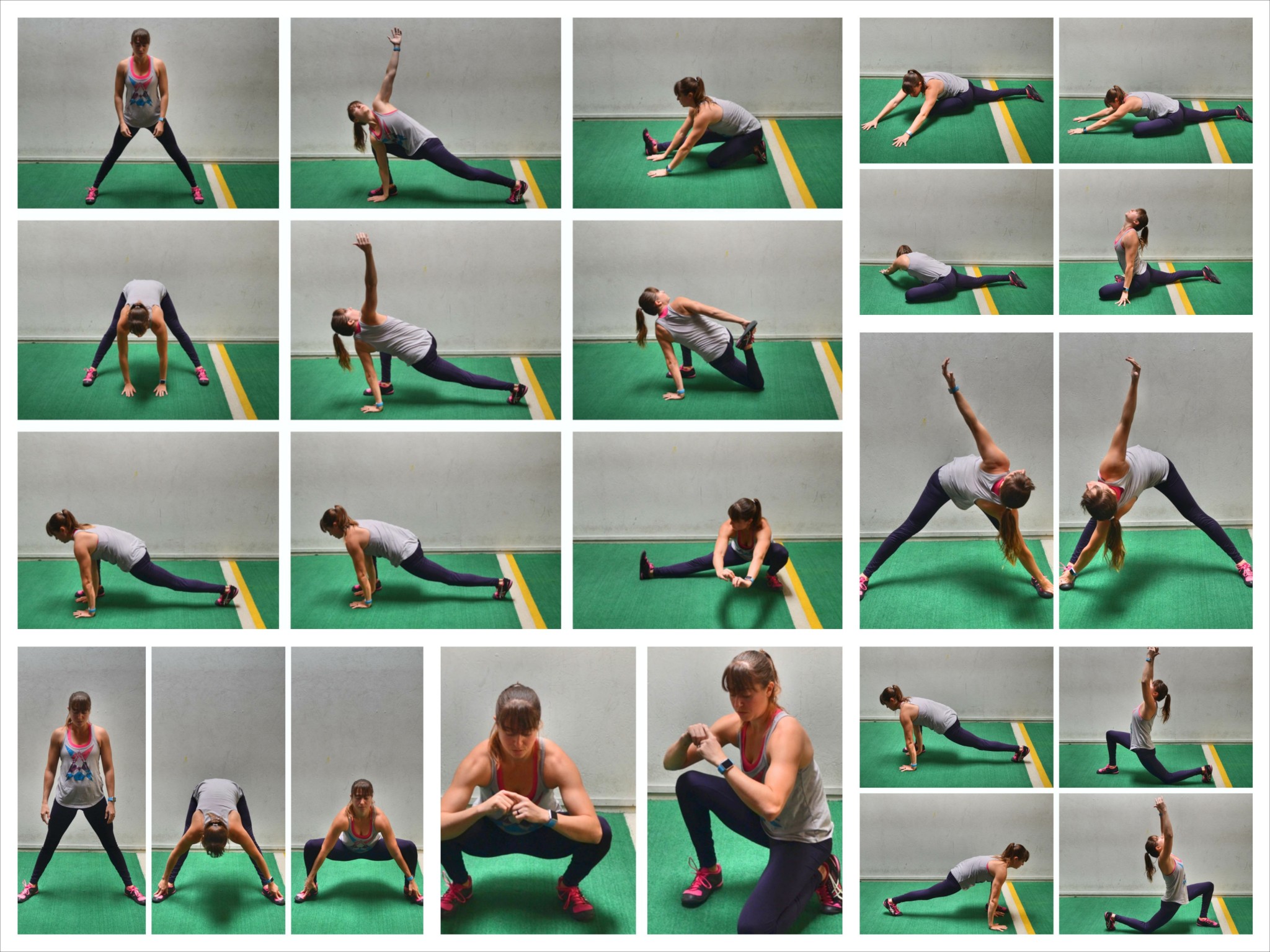
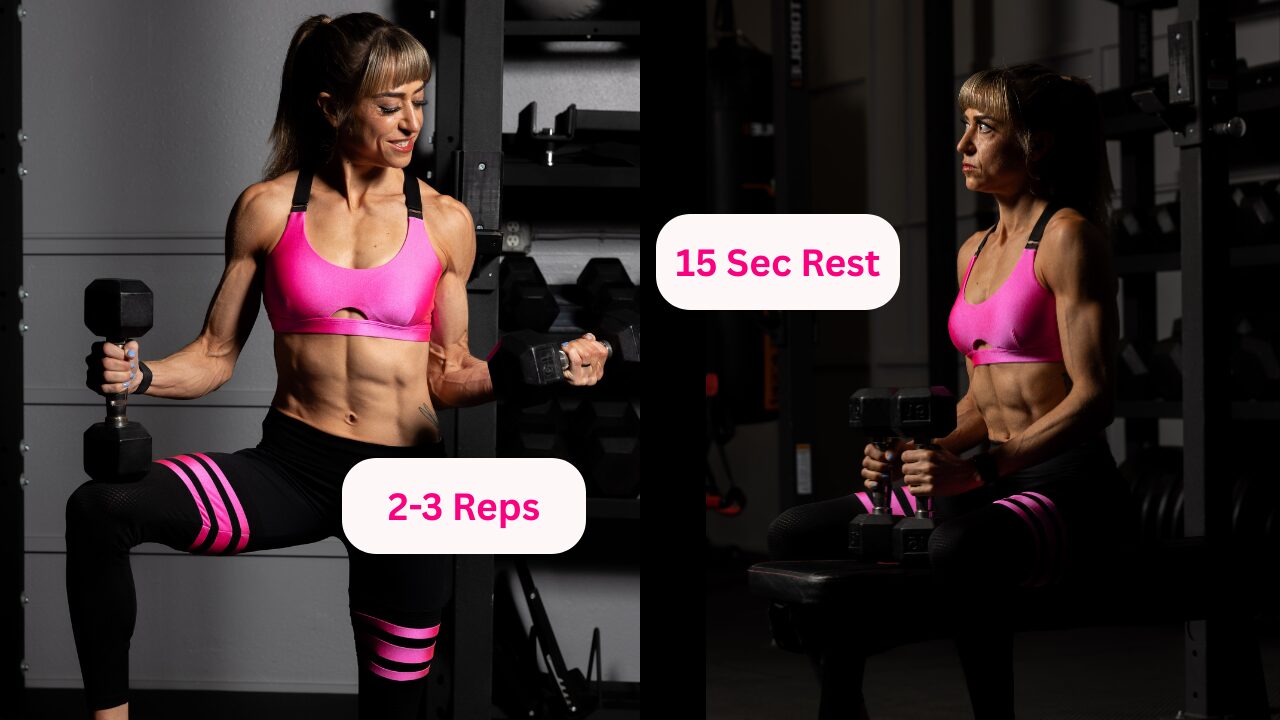
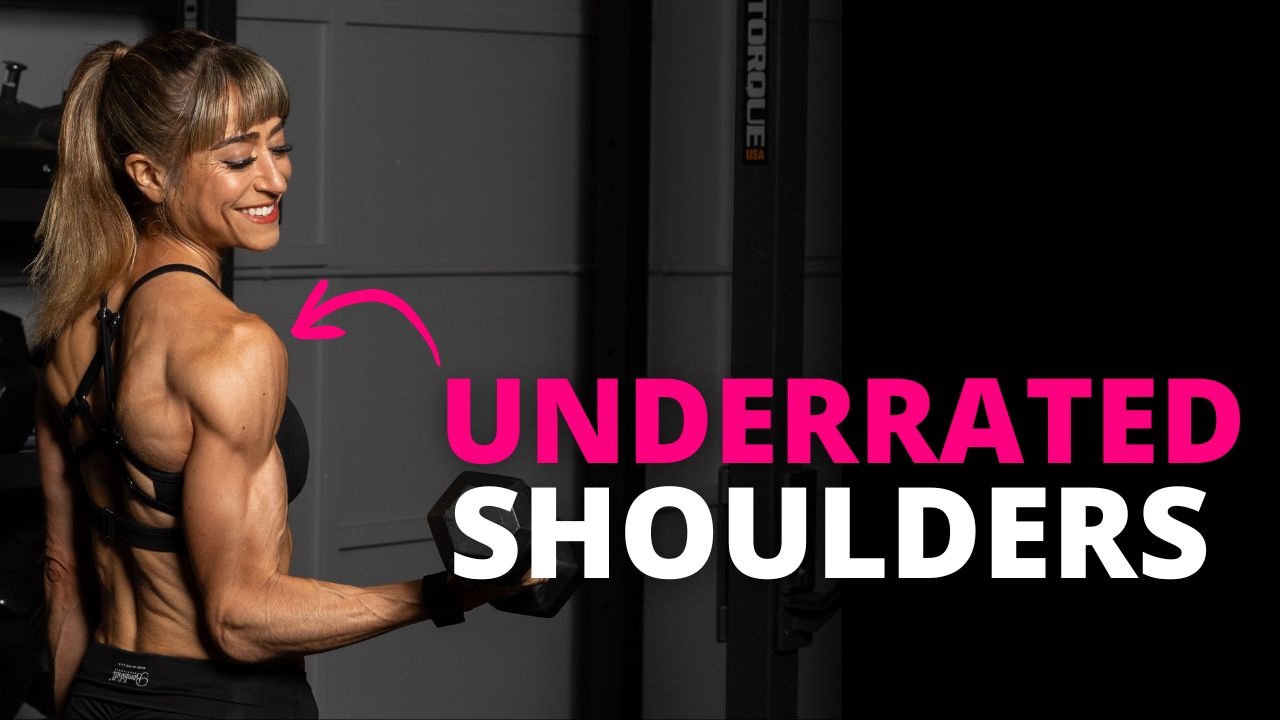

0 Comments